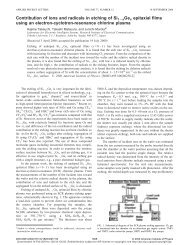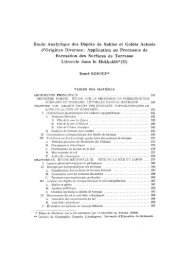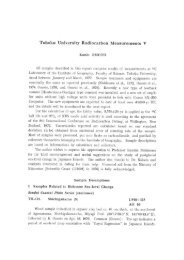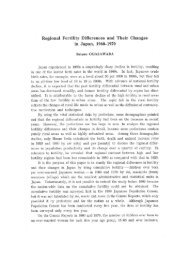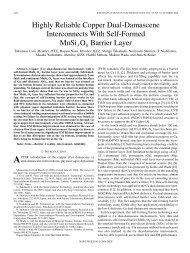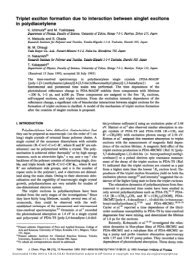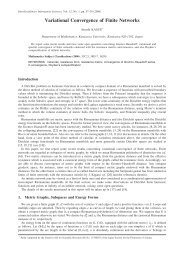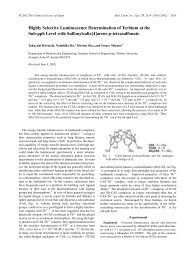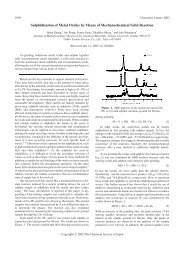MgE71241:1attf:3(t At-- 0 -3 5t5M I:. N1144±TitoD riziMinliJ VAT .9f 1 ...
MgE71241:1attf:3(t At-- 0 -3 5t5M I:. N1144±TitoD riziMinliJ VAT .9f 1 ...
MgE71241:1attf:3(t At-- 0 -3 5t5M I:. N1144±TitoD riziMinliJ VAT .9f 1 ...
Create successful ePaper yourself
Turn your PDF publications into a flip-book with our unique Google optimized e-Paper software.
8 1. INTRODUCTION<br />
of the limb-scanning instruments can measure to as high as 80° latitude, providing near-<br />
global coverage [Reber et al., 19931. The UARS has two instruments for thermospheric wind<br />
measurements. They are a high resolution Doppler imager (HRDI) and a wind imaging inter-<br />
ferometer (WINDII). The HRDI is a triple-etalon Fabry-Perot interferometer/-photometer<br />
which measures the horizontal wind and atmospheric temperature from the Doppler shift<br />
of the 02 atmospheric band (b' X3 E;) absorption and emission features, respectively.<br />
Morton et al. [1993] and Burrage et al. [1994] presented preliminary results of a study<br />
of mesospheric and lower thermospheric diurnal tidal winds obtained with the HRDI on<br />
the UARS. The obtained maximum amplitude of meridional wind is approximately 75 m/s.<br />
The observed vertical wavelength is about 20 km, with amplitudes increasing linearly with<br />
height. The WINDII takes advantage of airglow emission lines photochemically produced<br />
from species in the upper mesosphere (OH), the lower thermosphere (02, O(1S)) and the<br />
middle thermosphere (0(1S), O(1D) and 0+(2P)) for the measurement of winds and tem-<br />
peratures in the altitude range 80 to 300 km. The instrument consists essentially of a charge<br />
coupled device (CCD) camera viewing the Earth's limb through a field-widened Michelson<br />
interferometer. Shepherd et a/. [1995] presented a review of the Doppler imaging concept,<br />
its implementation in the WINDII and the current status of validation and data process-<br />
ing. McLandress et al. [1996] analyzed thermospheric winds measured by the WINDII for<br />
migrating solar tides, and reported some interesting features of thermospheric tides.<br />
1.4 Ground-based observations of the high-latitude<br />
thermospheric neutral wind<br />
1.4.1 Upper thermosphere<br />
Fabry-Perot interferometers have been used for many years to measure winds and tem-<br />
peratures in the upper thermosphere from line-of-sight Doppler shifts of the 01630.0 nm<br />
emission line, for example Armstrong [1969], Hays and Roble [1971], Hernandez and Roble<br />
[1976], Sipler and Biondi [1979], Jacka et al. [1979], Hays et al. [1979], Burnside et al.<br />
[1981] and others. A classical Fabry-Perot interferometer has a photomultiplier at the center<br />
of a pinhole in the image plane of interference fringes by a Fabry-Perot etalon. Scanning<br />
of the etalon by changing the pressure within the etalon cavity or by a physical change of<br />
the etalon's plate separation has widely been used as a mean of producing an emission line<br />
spectrum.






